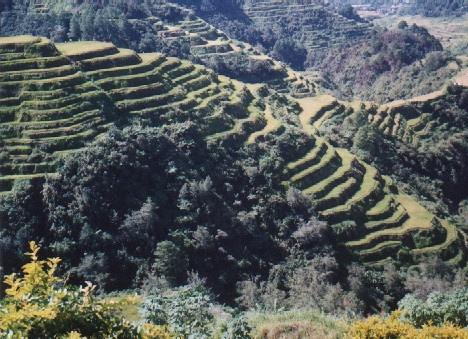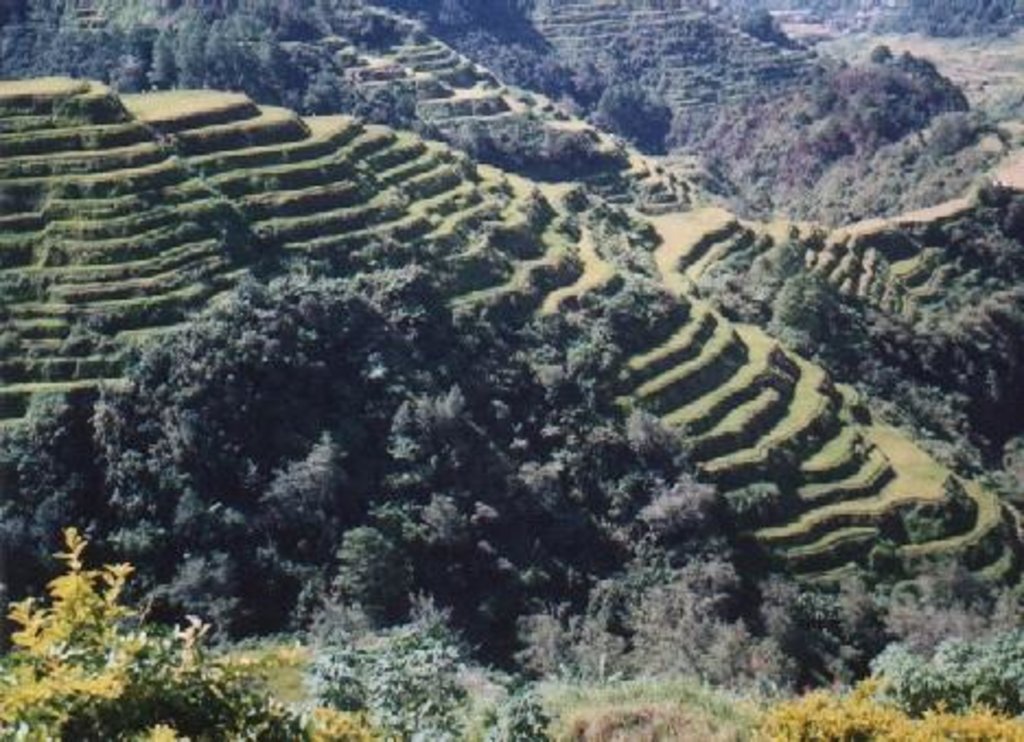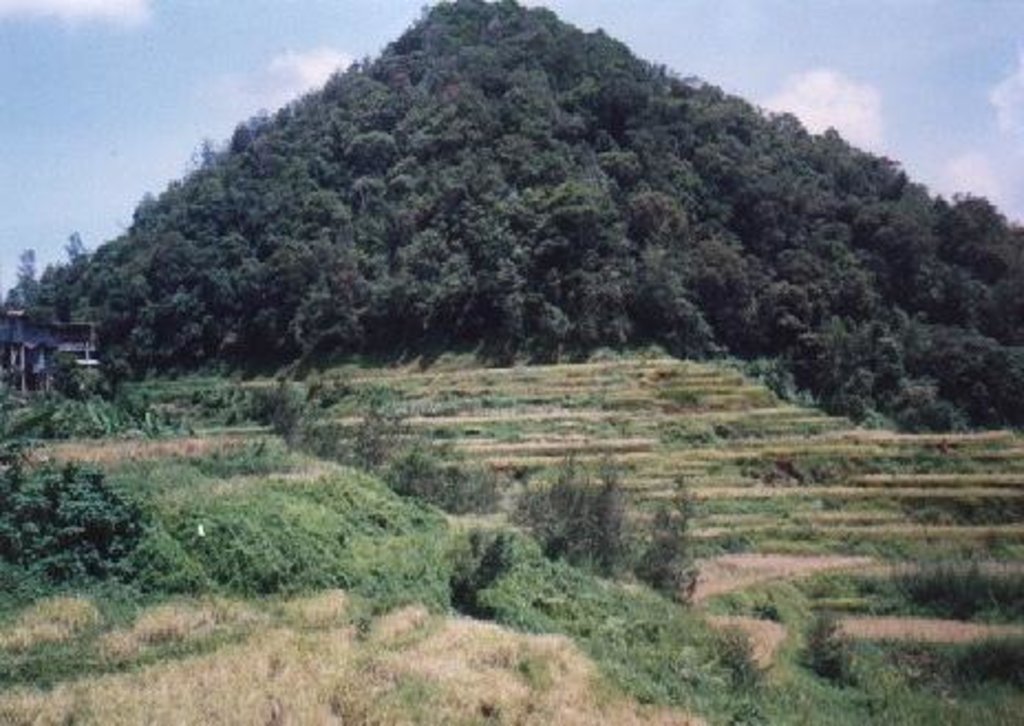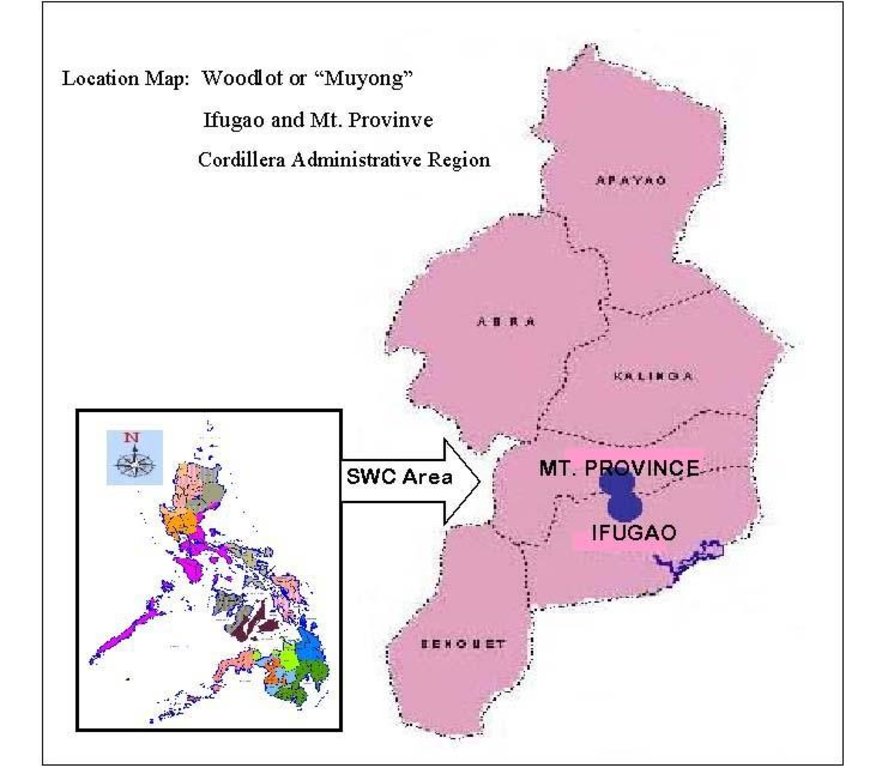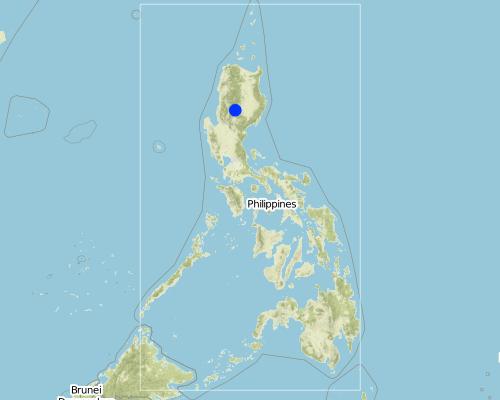Woodlot [菲律宾]
- 创建:
- 更新:
- 编制者: Unknown User
- 编辑者: Deborah Niggli
- 审查者: Deborah Niggli
Muyong
approaches_1955 - 菲律宾
查看章节
全部展开 全部收起1. 一般信息
1.2 参与方法评估和文件编制的资源人员和机构的联系方式
有助于对方法进行记录/评估的项目名称(如相关)
Decision Support for Mainstreaming and Scaling out Sustainable Land Management (GEF-FAO / DS-SLM)1.3 关于使用通过WOCAT记录的数据的条件
(现场)数据是什么时候汇编的?:
15/01/2009
编制者和关键资源人员接受有关使用通过WOCAT记录数据的条件。:
是
2. SLM方法的描述
2.1 该方法的简要说明
Woodlot is a forest management approach which aims the to provide food, wood for fule, construction and material for woodcarving and to provide a steady source of water for the lower-hilly riceland area.
2.2 该方法的详细说明
该方法的详细说明:
Woodlot or 'muyong' as it is called in the local language is basically a timber management system. The harvesting of non-timber products like fruits and other benefits like the maintenance of a stable water supply are secondary objectives. Fuelwood and construction timber are the major products of woodlot. The usual size of woodlot is not more than one hectare and is individually owned. The approach is believed to have started at least a century ago. It began when it became apparent that sources of fuelwood near homes were becoming difficult to find. The approach also came about when people realized the need for accountability in the use and management of natural resources. The ancestors of the present-day owner of the woodlots were influenced by the relationship of a reliable and steady water supply and the existence of forest. Woodlots normally evolved from swidden fields. The owners encouraged the growth of prefered species either by direct seeding or by transplanting seedlings uprooted fron nearby forest.
Present practices involve the growing of introduced-fast growing species such as mahogany (Switeria macrophylla) and gmelina (Gmelina arborea). Rattan a valuable material for the furniture industry is also raised in the woodlot. Medicinal herbs are also gathered. Mushrooms and nuts are also grown. Woodlot is an approach unique to the indigenous tribes of the Cordillera. Boundaries, tenures and disputes are settled based on local traditions and beliefs. Common disputes arise from illegal gathering of fruit products. Transfer of ownership is upon the discretion of parents and only to married children. Inheritance of a woodlot denotes the handling down of authority and responsibility over the family. Woodlot or 'muyong'has been hailed as one of the nine successful 'Traditional Forest Related Knowledge' (TFRK). In terms of sophistication and social organization, woodlot is no equal among the approaches being practiced by the different ethnic groups in the country.
2.3 该方法的照片
2.5 采用该方法的国家/地区/地点
国家:
菲律宾
区域/州/省:
Mountain Province and Ifugao
Map
×2.6 该方法的开始和终止日期
若不知道准确的年份,请注明该方法的大致开始日期。:
50多年前(传统)
2.7 方法的类型
- 传统/本土
2.8 该方法的主要目的/目标
Sustainable use of forest resources by employing traditional beliefs, customs and traditions. Promote ecological balance.
2.9 推动或妨碍实施本办法所适用的技术的条件
法律框架(土地使用权、土地和水使用权)
- 启动
Regalian doctrine which says that all public lands are owned by the state. -> Regular maintenance of a portion of the forest by weeding, removing of vines and undesirable species.
了解SLM,获得技术支持
- 启动
Lack of knowledge on the proper care and maintenance of forest resources. -> Provisions of traditional skills, customs and beliefs in the care and maintenance.
3. 相关利益相关者的参与和角色
3.1 该方法涉及的利益相关者及其职责
- 当地土地使用者/当地社区
Specific ethnic groups: The indigenous tribes in the Cordillera and Caraballo mountain ranges in Northern Luzon.
3.2 当地土地使用者/当地社区参与该方法的不同阶段
| 当地土地使用者/当地社区的参与 | 指定参与人员并描述活动 | |
|---|---|---|
| 启动/动机 | 被动 | |
| 计划 | 被动 | |
| 实施 | 被动 | |
| 监测/评估 | 无 |
3.4 有关SLM技术选择的决策
具体说明谁有权决定选择要实施的技术:
- 仅限土地使用者(自主)
解释:
Land user driven (bottom-up). Indigenous practice. Consultation among clan members and between clan.
明确做出决策的依据:
- 个人经验和意见(无记录)
4. 技术支持、能力建设和知识管理
4.1 能力建设/培训
是否为土地使用者/其他利益相关者提供培训?:
是
明确受训人员:
- 土地使用者
培训形式:
- 在职
涵盖的主题:
Informal training among family members on the management of forest for sustainable use.
4.2 咨询服务
土地使用者有权使用咨询服务吗?:
是
指明是否提供了咨询服务:
- 在土地使用者的土地上
说明/注释:
Environmental protection particularly watershed management is a top priority of the government and NGO's. The 'woodlot' approach of watershed protection is regarded as a perfect example of forest management being employed by indigenous people.
4.3 机构强化(组织发展)
是否通过这种方法建立或加强了机构?:
- 是,适度
具体说明机构的强化或建立程度:
- 本地
说明机构、角色和职责、成员等。:
by promoting aesthetics
4.4 监测和评估
监测和评估是该方法的一部分吗?:
是
若是,该文件是否用于监测和评估?:
否
4.5 研究
研究是该方法的一部分吗?
是
明确话题:
- 社会学
- 经济/市场营销
- 生态学
- 技术
提供进一步的细节,并指出是谁做的研究:
Researches on traditional forest knowledge of different ethnic groups.
5. 融资和外部物质支持
5.1 该方法中SLM组成部分的年度预算
注释(例如主要的资助来源/主要捐助者):
land users 100%
5.2 为土地使用者提供财政/物质支援
土地使用者是否获得实施该技术的财政/物质支持?:
是
5.3 对特定投入的补贴(包括劳动力)
- 设备
| 具体说明哪些投入得到了补贴 | 程度如何 | 对补贴做出具体说明 |
|---|---|---|
| 工具 | ||
- 农业
| 具体说明哪些投入得到了补贴 | 程度如何 | 对补贴做出具体说明 |
|---|---|---|
| 种子 | ||
| seedlings | ||
如果土地使用者的劳动力是一项重要的投入,那么是不是:
- 自愿
5.4 信用
是否根据SLM活动的方法给予信用值?:
否
5.5 其它激励或手段
是否有其他激励措施或工具用于促进SLM技术的实施?:
否
6. 影响分析和结论性陈述
6.1 方法的影响
该方法是否调动/改善了使用财务资源实施SLM的途径?:
- 否
- 是,很少
- 是,中等
- 是,支持力度很大
The approach contributed to effective water conservation to sustain the rice terraces
该方法是否改善了阻碍SLM技术实施的土地使用权/用户权问题?:
- 否
- 是,很少
- 是,中等
- 是,支持力度很大
The land use right (no land titles) is being respected and honored and the approach fits well in the over-all scheme. The land use right is well respected in the communities. Conflicts are peacefully resolve through compromises and agreements.
Did other land users / projects adopt the Approach?
- 否
- 是,很少
- 是,中等
- 是,支持力度很大
The concept is being adopted in other areas with different degrees of success. It is being talked about as a classic example of resource management.
6.3 方法活动的可持续性
土地使用者能否维持通过该方法实施的措施(无外部支持的情况下)?:
- 是
6.4 该方法的长处/优点
| 土地使用者眼中的长处/优势/机会 |
|---|
| Strong respect for customs/traditions in the management of resources. |
| Strong backing from local government units (LGU's) |
| 编制者或其他关键资源人员认为的长处/优势/机会 |
|---|
| Respect for land users rights even though there is no legal documents to hold on for the land |
| Continous replanting |
| Strong resolve of the land users on the need for sustainability. |
6.5 该方法的弱点/缺点以及克服它们的方法
| 土地使用者认为的弱点/缺点/风险 | 如何克服它们? |
|---|---|
| Woodlot can be a sanctuary for pests for the nearby rice fields. | Maintenance and cleanliness. |
| 编制者或其他关键资源人员认为的弱点/缺点/风险 | 如何克服它们? |
|---|---|
| Not all members of the community is involved/benefited. | Wider involvement using other areas within the vicinity of the community. |
| Tendency for the woodlot to be commercialized and over-exploited. | Carrying capacity of the woodlot should be determined. |
7. 参考和链接
7.1 方法/信息来源
- 实地考察、实地调查
- 与土地使用者的访谈
7.2 参考可用出版物
标题、作者、年份、ISBN:
Report on the Study of Traditional Forest Related Knowledge of the Ifugao and Bontoc Ethnic Groups in the Cordillera Region of the Philippines
可以从哪里获得?成本如何?
Department of Environment and Natural Resources, Quezon City
标题、作者、年份、ISBN:
Environmental and Socio-Economic Impact, Analysis of an Indigenous and Introduced Agroforestry Systems in Luzon.
可以从哪里获得?成本如何?
University of the Philippines Los Banos Library, Los Banos, Laguna
链接和模块
全部展开 全部收起链接
无链接
模块
无模块


